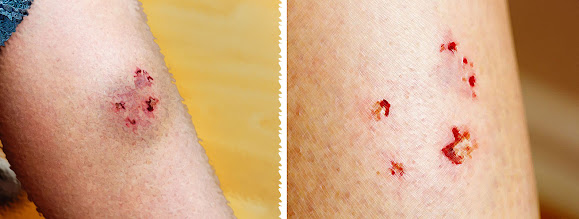Categorisation of Visit in Animal Bite - Identification of the species involved animal
The first step in treating an animal bite involves identifying what type of animal bit them. If they identify whether it was a cat, dog, snake, insect, mammal, bird or reptile then we need to know the level of severity of the bite. There are 4 levels of severity. Level 1 is just damage to skin; Level 2 affects muscles, tendons, ligaments, bones, cartilage, nerves and spinal cord; Level 3 requires surgery and Level 4 does not have any medical treatment options.
The categorisation of visit in animal bite is based on the severity of injury, time since the incident occurred, and the risk of infection.
Severe injuries require evaluation by a medical professional within 24 hours. If the wound was inflicted less than 5 minutes ago and/or the victim is unconscious or in shock then he/she should seek medical attention immediately. Injuries greater than 5 minutes old may have already developed complications. Even if the victim is conscious, they should still seek treatment to ensure the wound does not become infected. Animal bite victims have been known to develop abscesses even 48 hours after the event.
Time since injury is also a factor when treating wounds. If it's been over 72 hours since the incident took place, the chance of infection increases dramatically. A patient should consult their doctor if they have any questions regarding the type of antibiotics required. Antibiotics are only prescribed in cases where the wound is deemed to be contaminated or infected.
Finally, the risk of infection is also considered when determining whether a person needs to be seen right away. A patient who has received rabies vaccination will not get sick despite receiving a wound; however, anyone who has not received the vaccine should be treated immediately.
Identification of the species involved animal
The identification of the type of animal involved is important. If an animal had access to the home and was able to get into places where children were present, then identifying its size, shape, colour, gender, and age may provide some clues as to what type of animal it could have been.
Size/shape:
If possible, note the size and shape (size and length) of the animal's head; tail; teeth; claw pads; leg; ears; neck; nose; breast; body; hooves; and legs. A good way to look at an animal's head is to place it on a flat surface and look at it from above. When looking at an animal's head, try to identify whether or not its eyes are open, closed, or blinking.
Colour:
Some animals are born black or brown, while others have white, grey, or speckled skin. Animals that are born dark tend to turn lighter over time due to exposure to sunlight. Look for patches of different colours on the animal's coat. Animals that are born white often develop their coats darker over time.
Age:
Most young animals have soft, pinkish-white fur that gradually turns to a greyer shade of colour. Older animals may have a darker tone to their fur.
Habitat:
This includes any place where the animal lives, eats, rests, mates, sleeps, makes nests, runs, hides, or burrows. Knowing where the animal normally spends its time can help you figure out how to protect yourself from being attacked.
Behaviour:
Look for patterns in behaviour. An animal that is always alert and aware may be protecting something valuable. Pay attention to changes in behaviour, such as sudden movements, unusual sounds, and abnormal smells.




No comments:
Post a Comment
Thanks